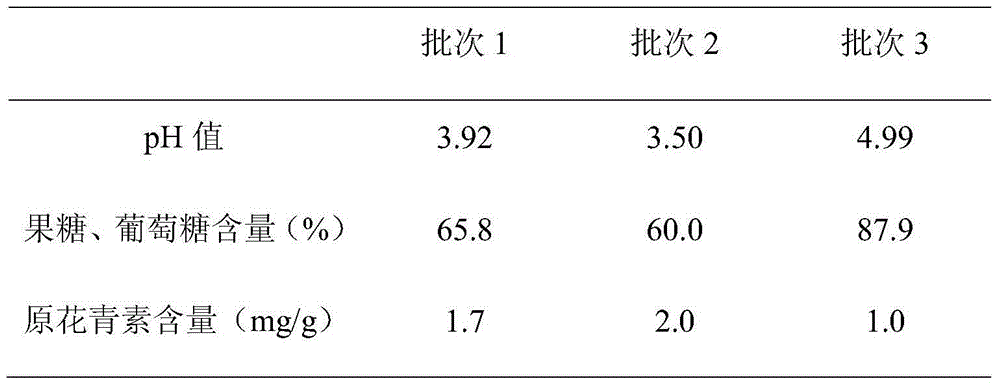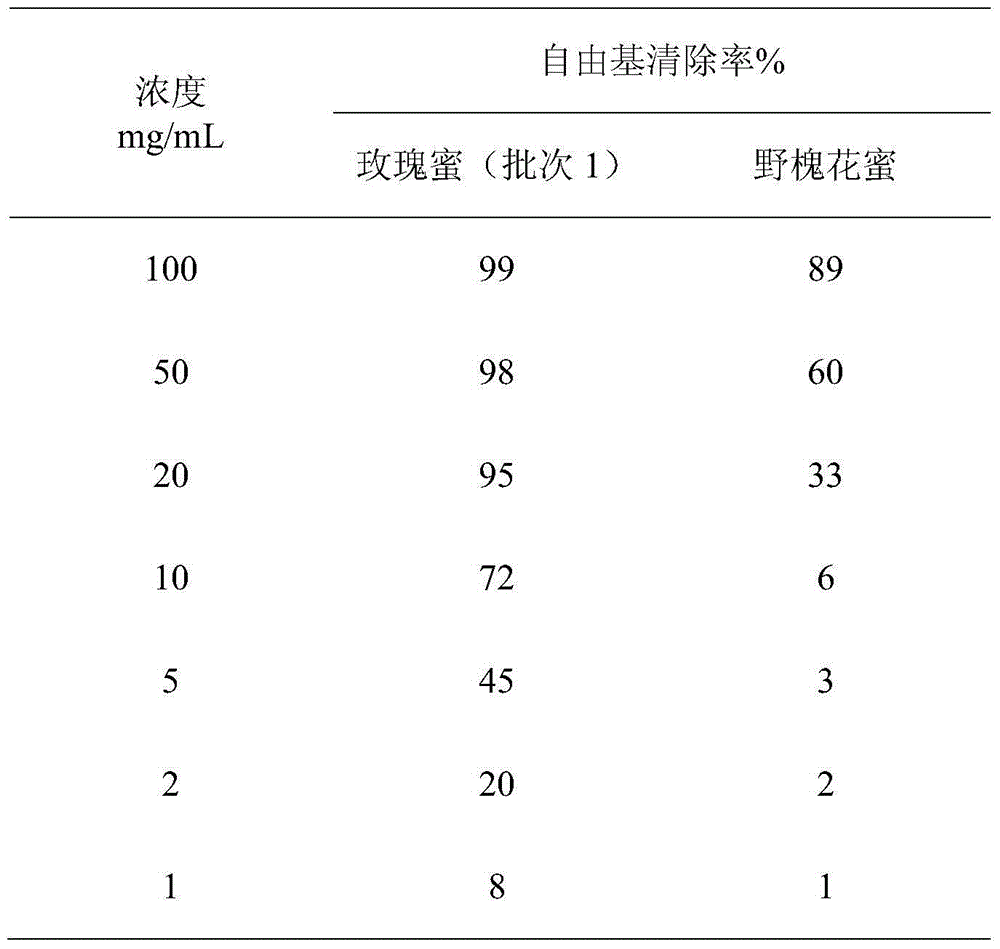Rose honey and application thereof
A technology of rose honey and rose petals, which is applied to cosmetic preparations, cosmetics, preparations for skin care, etc., can solve the problems of preparations with peculiar smell, oily skin, skin allergies, etc., so as to improve wrinkles and fine lines and improve skin elasticity. , Enhance the effect of skin barrier
- Summary
- Abstract
- Description
- Claims
- Application Information
AI Technical Summary
Problems solved by technology
Method used
Image
Examples
Embodiment 1
[0021] The preparation of embodiment 1 rose honey
[0022] Batch 1: Manually collect 1000g of rose petals that are not fully open. After chopping, mix them evenly according to the weight ratio of rose petals and acacia nectar at a weight ratio of 1:3. After soaking at 4°C for 14 days, separate the petals, which can be used in other products. Vacuum drying the nectar after removing the petals to obtain a purple-red viscous rose honey product with rose aroma.
[0023] Batch 2: Manually collect 500g of rose petals that are not fully opened. After crushing, mix them evenly according to the weight ratio of rose petals and milk vetch nectar at a weight ratio of 1:2. After immersing at 0°C for 28 days, separate the petals. The petals can be used for other The product is to vacuum-dry the nectar after removing the petals to obtain the finished product of rose honey.
[0024] Batch 3: Manually collect 800g of rose petals that are not fully open, mix them evenly according to the weight...
Embodiment 2
[0025] Example 2 Detection of physical and chemical indicators of rose honey
[0026] Adopt pH measuring method (Chinese Pharmacopoeia 2010 edition an appendix VII G), detect the pH value of the rose honey sample (being mixed with 10wt% aqueous solution) prepared according to batch 1~3 method in embodiment 1.
[0027]The method specified in GB / T 18932.22 (Determination of fructose, glucose, sucrose and maltose content in honey-liquid chromatography differential refraction detection method) was used to determine the content of fructose and glucose in rose honey. The determination procedure is as follows: weigh 5g of the sample, accurate to 0.001g. Place in a 100mL beaker, add 30mL water, stir with a glass rod to dissolve the sample completely, transfer to a 100mL volumetric flask, then wash the beaker with 10mL water three times and transfer to the above-mentioned 100mL volumetric flask, dilute to volume with acetonitrile, Mix well. Filter the sample solution into a sample bo...
Embodiment 3
[0031] Example 3 Antioxidant activity test of rose honey
[0032] The DPPH method was used to measure the anti-oxidation and free radical scavenging activity of the rose honey prepared according to the batch 1 method in Example 1, and the wild pagoda nectar was used as a contrast. The determination procedure is as follows: the rose honey and the wild pagoda japonica honey not impregnated with roses are respectively prepared into aqueous solutions with deionized water, pipette 2 mL into a 10 mL stoppered test tube, add 2 mL of DPPH ethanol solution (2×10 -4 mol / L), fully mix, stand at room temperature, measure the absorbance A of 517nm wavelength with a spectrophotometer after 30min 517 (Taking ethanol as a reference); Simultaneously measure the absorbance A after mixing 2mL DPPH solution with 2mL ethanol c , and the absorbance A after mixing 2mL extract with 2mL ethanol solution 0 , measured three times in parallel, and the average value was taken. The measurement results a...
PUM
 Login to View More
Login to View More Abstract
Description
Claims
Application Information
 Login to View More
Login to View More - R&D
- Intellectual Property
- Life Sciences
- Materials
- Tech Scout
- Unparalleled Data Quality
- Higher Quality Content
- 60% Fewer Hallucinations
Browse by: Latest US Patents, China's latest patents, Technical Efficacy Thesaurus, Application Domain, Technology Topic, Popular Technical Reports.
© 2025 PatSnap. All rights reserved.Legal|Privacy policy|Modern Slavery Act Transparency Statement|Sitemap|About US| Contact US: help@patsnap.com



